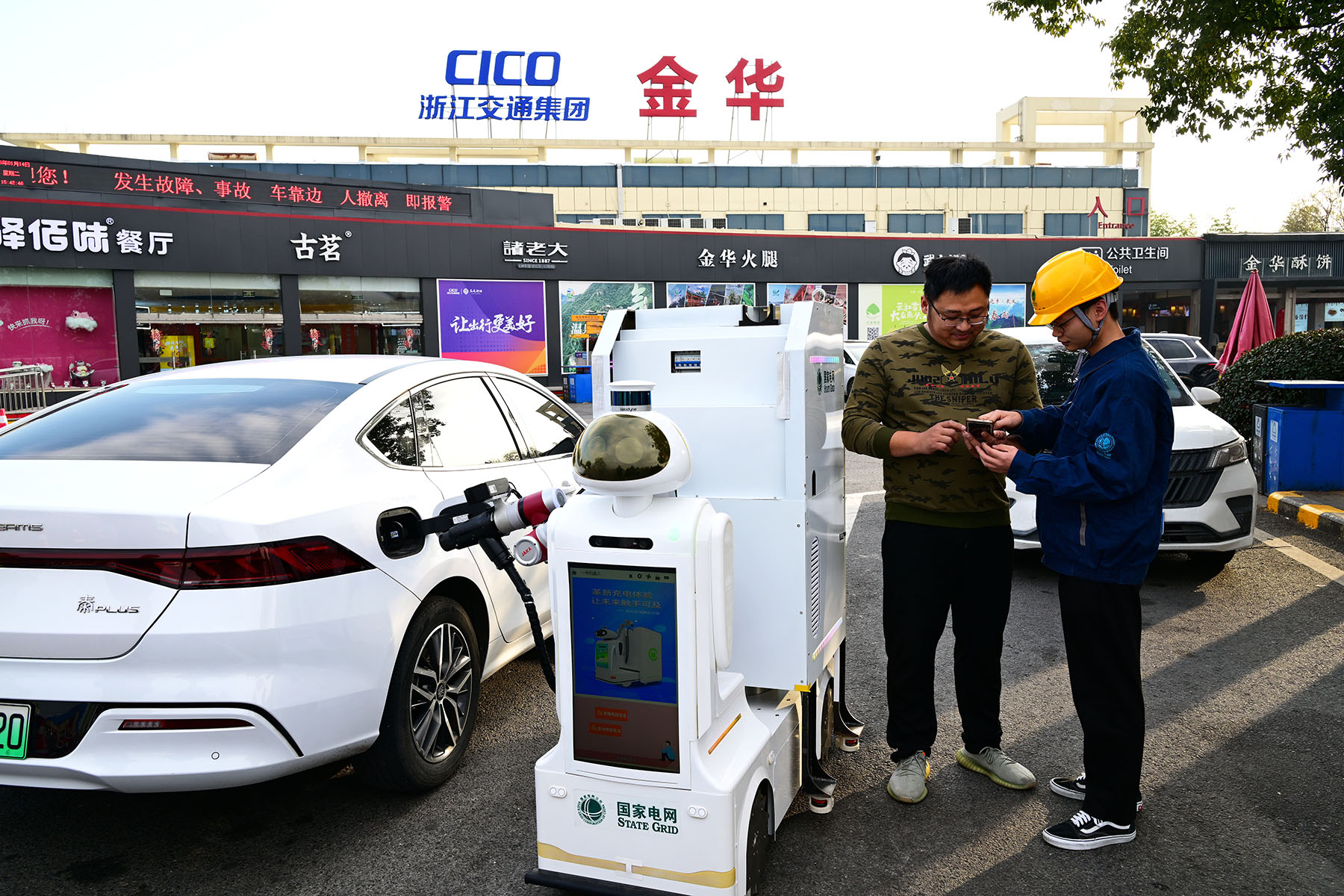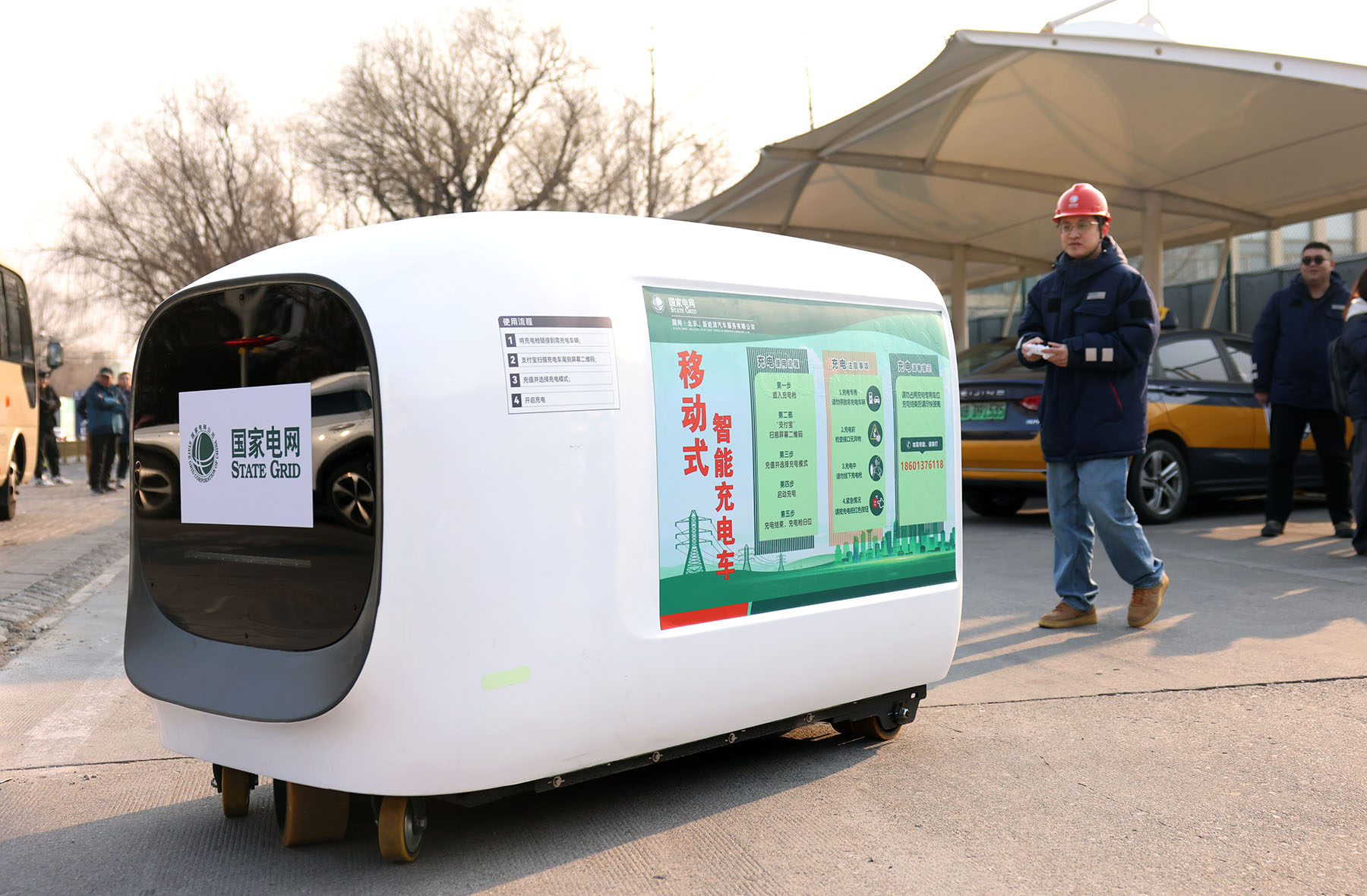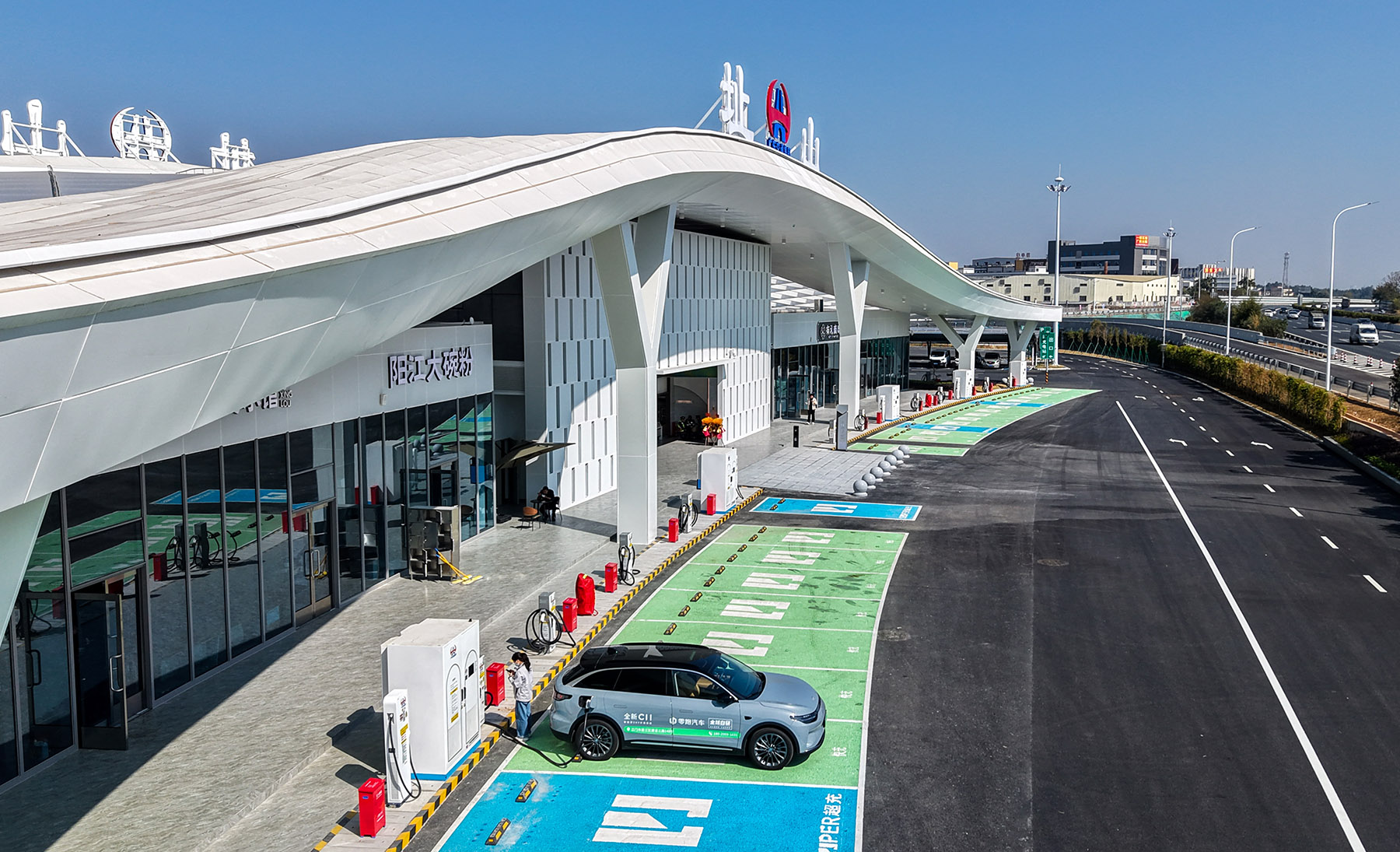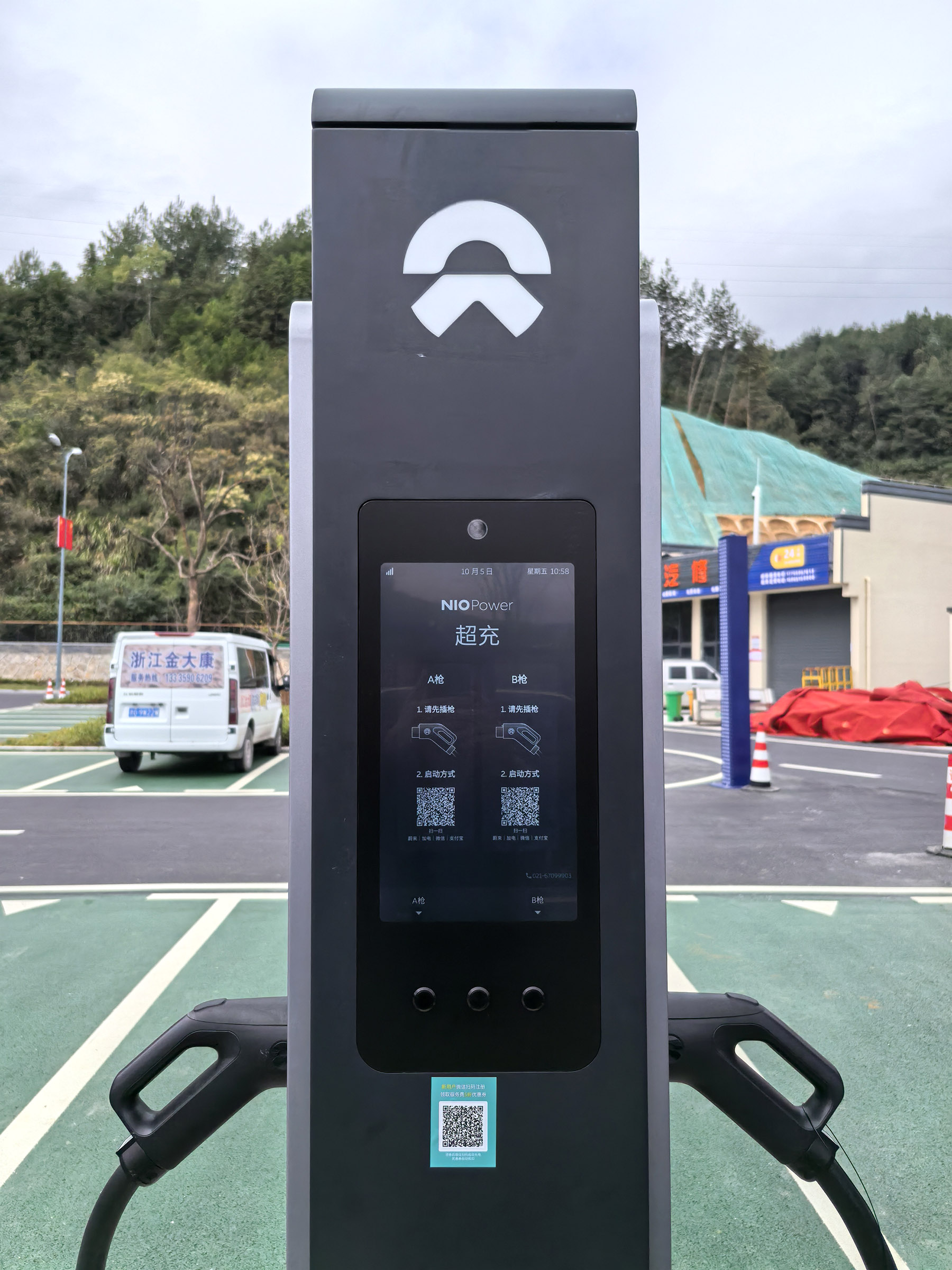Electric vehicle drivers on long Spring Festival journeys welcome upgrades

The nation's expanding electric vehicle charging network has enabled some EV drivers to breathe a sigh of relief during this year's 40-day Spring Festival travel rush period, allowing them to avoid excessive range anxiety and recharge while on the road with relatively more ease than in previous years.
The Spring Festival travel rush, referred to as chunyun in Chinese, runs from Jan 14 to Feb 22 this year, and is typically characterized by heavy traffic on major roads as people head home for Chinese New Year and then return to the places where they work afterward.
With many people driving hundreds if not thousands of kilometers during this time, fueling up along the way is essential. For petrol vehicles this is not much of a problem as China's sprawling expressway network is well served by rest areas with gas stations.
READ MORE: China's highways 'to see record EV charging volume during CNY'
For EV drivers, however, long journeys, especially during peak travel times, have been a source of considerable anxiety. Unlike filling up a petrol vehicle, which takes just a couple of minutes, EVs require specialist charging infrastructure, and an average single charge can take anywhere from 30 minutes to an hour.
For petrol vehicle drivers, queuing behind three, four or even five cars to fuel up still only takes a matter of minutes, but for EV drivers in the same situation it could take hours before they are back on the road.
According to the Ministry of Transport, daily EV traffic on the nation's expressways has exceeded 6.8 million vehicles during the travel rush so far, a 60 percent increase from the previous year, with EVs making up approximately 17 percent of all expressway traffic.
The ministry said it has implemented various measures to enhance the charging efficiency for EV drivers during busy travel periods. As of November 2024, China had nearly 49,300 charging bays at its expressway service areas, an increase of 16,600 from the end of 2023. The percentage of expressway service areas with charging facilities has risen from 85 percent in 2023 to 97 percent.
For Wang Qiuxia, a native of Jining in East China's Shandong province who works in Chongqing in Southwest China, the difference on the road this year was clear. She and her husband, who drive their EV 1,500 kilometers home for the holidays every year, made the trip this time without the usual anxiety over charging.
"Now, charging is so convenient," Wang said. "The navigation system in our car alerts us to nearby stations and available charging spots. We stop when we're tired, and while we rest for about 40 minutes, the car gets enough charge for the next leg of the journey."
The journey between Chongqing and Jining can take them up to nearly 20 hours, including rest and charging stops, as well as the occasional traffic jam. In previous years, long wait times at charging stations were a frequent frustration. "Last year, there weren't as many charging stations," Wang said. "But now, it's much easier."

Rammed roads
The Ministry of Transport projects some 7.2 billion journeys will be made by self-driving trips during the travel rush, accounting for nearly 80 percent of the expected 9 billion total trips during the 40-day period.
"Every holiday, finding charging stations and dealing with range anxiety are common concerns for travelers," said Li Yang, vice-minister of transport, at a news conference in December ahead of the travel rush. "To address this, we're actively enhancing infrastructure and deploying solutions to ensure a smoother journey for everyone."
However, during peak travel times, some regions still experience charging shortages. To mitigate this, the ministry has introduced mobile charging stations and optimized the distribution of existing infrastructure based on demand forecasts. Travelers can also check for available charging stations through various apps and on-site displays.
The ministry has implemented various measures to enhance the efficiency of charging for EV users during busy travel periods.
"The ministry has been guiding local authorities to expedite building charging infrastructure along highways while establishing a management mechanism for busy charging areas at highway service areas during major holidays to meet the escalating demand for EV charging," said Gao Bo, deputy director of the transport service department at the Ministry of Transport during a news conference last month.
"With the exception of a few high-altitude service areas, almost all expressway service areas in China have built charging infrastructure," he added.
During the travel rush, the ministry has expedited the deployment of fast-charging and high-power facilities, with fast-charging facilities extensively deployed at highway service areas. Provinces such as Zhejiang, Jiangsu and Guangdong have adopted ultrafast charging stations to cater to the demand for rapid charging. Additionally, mobile charging devices have been introduced in high-demand service areas to provide flexible charging services.
"During Spring Festival, we have intensified congestion management on highways, implementing tailored measures to alleviate traffic congestion at congested sections. This has led to a marked enhancement in the efficiency of highway travel nationwide, resulting in a reduction in severe congestion," Gao said.
The expanded charging infrastructure has alleviated the typical stress associated with long-distance travel for numerous EV owners. "I no longer experience 'charging anxiety'," Wang said, echoing the sentiment shared by countless other travelers benefitting from enhanced access to charging points.

Improved infrastructure
The development of charging stations nationwide has been conspicuous this year. Notably, at the Daguan Service Area on the Baotou-Maoming Expressway in Chongqing.
"We have installed clear signage. In case of queues, drivers can follow the signs to find a nearby charging station," said Gao Jing, an operations manager from the Southern Operations Branch of the Chongqing Expressway Group.
The Daguan Service Area, emblematic of many service areas along China's expressways, has 24 fixed charging bays and additional mobile charging equipment to accommodate heightened demand. Over the past year, the service area has added 16 more bays, reflecting efforts to address the surge in EV charging demand.
Gao has noted a substantial surge in demand for electric vehicle charging since 2022. Long queues for charging at expressway service areas have become increasingly prevalent, underscoring a growing demand for charging stations.
Gao explained that the Daguan Service Area is located along an artery connecting China's northern Inner Mongolia autonomous region with the southern province of Guangdong. Many workers travel from Sichuan province, Chongqing and other inland areas to Guangdong, a coastal region renowned for its thriving economy, particularly in the manufacturing and service industries. During the Spring Festival travel rush, a large number of people return to their inland hometowns after working in Guangdong, Fujian and Shanghai. The surge in travel demand during this period is substantial, as many residents rely on expressways to return to their rural homes.
"This expressway links Chongqing and Sichuan to Guangdong and Guangxi, making it a crucial route for workers heading home during the Spring Festival travel period. Before the festival, more travelers journey from south to north, whereas after the festival, the flow reverses, with more people traveling from north to south. The characteristics of the Spring Festival travel period are very distinct," Gao said.
"We have a major responsibility to alleviate charging anxiety for EV drivers in Chongqing. Since last year, we have significantly increased investment in building charging stations," he added.
According to Li Li, who oversees the Daguan Service Area, a dedicated team of maintenance staff ensures the smooth operation of the charging stations. "Each week, full-time staff conduct routine maintenance on the equipment," she said. "They check for any irregularities, inspect safety mechanisms, and promptly address any potential issues in daily operations."
In addition, on-site employees carry out daily inspections to ensure the charging stations are functioning correctly. "Typically, we test the chargers by unplugging the cable to check if it disconnects smoothly, then scan the device with an app to confirm it's operating properly," Li added.
To further assist drivers, a dedicated staff member is available to help those unfamiliar with the charging stations. Any issues are immediately reported to the maintenance team, which can typically resolve problems within minutes.

The government and service providers have also introduced real-time tracking tools to enhance the charging experience for travelers. Through apps and smart systems, drivers can check the availability of charging stations in advance, allowing for better trip planning.
As travelers navigate expressways during the Spring Festival travel rush, electronic signs near service areas like Daguan display alerts such as "Charging devices available at the upcoming rest area", helping drivers plan ahead and easing concerns about charging on their journeys.
According to the Chongqing Expressway Group, charging infrastructure now spans all service areas along Chongqing's expressways, with the number of charging bays more than doubling over the past year. There are 1,573 charging bays across the network's service areas, accounting for about 10 percent of all parking bays for small passenger vehicles.
The initiatives undertaken at the Daguan Service Area and across the Chongqing expressway network are part of a nationwide endeavor to enhance the charging experience for EV owners. Numerous expressway service areas nationwide have implemented similar initiatives to facilitate drivers in locating charging stations during their travels.
Liu Xin, a senior engineer and researcher at the China Academy of Transportation Sciences, emphasized the significant changes witnessed in Spring Festival travel.
"Since 2020, a notable shift in people's travel habits and preferences has occurred. The demand for privacy and safety has notably increased, rendering private car travel an increasingly favored choice for many individuals since 2023. Consequently, the number of individuals traveling by car is now included in Spring Festival travel statistics, with private car travel accounting for approximately 80 percent of total passenger flow," Liu said.
The number of self-driving trips was included in the Spring Festival travel statistics for the first time in 2023. Before then, only commercial passenger transport volume was counted.
Regarding EVs, Liu highlighted China's expansive road network, which encompasses the lengthiest expressway network. This infrastructure serves as a robust foundation for the burgeoning popularity of private car travel. Increasingly, individuals are opting to drive themselves due to the robust foundation laid for such travel.
"By enhancing service capabilities and infrastructure, China has empowered individuals to confidently drive their EVs and return home without concerns of running out of charge. Improved services have played a pivotal role in supporting travel during Spring Festival, ensuring swift and safe journeys home," he said.

Room for growth
Despite these advancements, some drivers, like 26-year-old Liu Maolin from Sichuan, express lingering apprehensions about the long-term reliability of the network. "While most service areas now feature charging stations, there remains some anxiety, particularly on longer journeys. I worry about potential scenarios such as traffic congestion along the route or running out of charge in remote areas," Liu Maolin said.
He drove with a friend commuting between Sichuan and nearby Chongqing in an EV during the holiday.
"I am comfortable driving a new energy vehicle on trips within a 300-km radius, but for longer journeys like those from Sichuan to Guangdong or Shanghai, I still have reservations," he said. Currently driving a gasoline-powered vehicle, Liu is closely monitoring developments in the EV market.
ALSO READ: China has to embrace innovation-driven future
Experts concur that as the EV market expands, the need for continuous infrastructure investment will also grow. "The advancements achieved this year represent a significant stride forward, yet sustained investment is crucial to meet future demand," said Liu Xin, the researcher at the China Academy of Transportation Sciences.
"As more people opt for electric vehicles, ensuring reliable and widespread charging access remains a top priority."
Vice-transport minister Li Yang affirmed in December that efforts are underway to further expand charging facilities, with a target of achieving comprehensive coverage of fixed and mobile charging infrastructure in all expressway service areas by the end of this year. By then, drivers like Liu Maolin may feel more assured in embarking on longer journeys with their EVs.


